Private collection of early Chinese White Wares continues Lally’s tradition of exhibiting only the very best
Tang covered jar, ewer and small covered jar from the Longsdorf Collection © 2015 J.J. Lally & Co., New York
NEW-YORK - Like a handful of other very top specialists New York Chinese art dealer J.J. Lally does not do the prestigious international fairs. Perhaps he does not need to, he is assured of his respect in his field and knows his market and his collectors who flock to buy at his eagerly-awaited gallery exhibitions.
The earliest Chinese porcelains are undecorated white wares, simply shaped vessels covered with a clear glaze allowing the white body to show through. Beginning in the 8th century the finest white wares from the major kilns were sent to the emperor as tribute wares.
The earliest examples of white wares in the Longsdorf Collection include a finely potted deep U-shaped cup and pedestal from the Sui dynasty and an early 7th century amphora with dragon handles.
A cup and pedestal stand, Sui Dynasty (A.D. 581-618), Xing or Gongxian kilns © 2015 J.J. Lally & Co., New York.
the thinly potted deep bell-shaped cup resting on a small solid foot, the matching stand in the shape of a stemdish with a raised collar to receive the cup in the center of the wide dish-shaped platform on a tall trumpet-shaped foot, all made of cream-white stoneware and covered with a transparent glossy glaze of pale greenish tint, the foot of the cup and underside of the pedestal unglazed. Height overall 5 3⁄4 inches (14.6 cm). Cup diameter 3 7⁄8 inches (8.7 cm); height 3 inches (7.6 cm). Stand diameter 5 3⁄8 inches (13.7 cm); height 2 5⁄8 inches (7.4 cm).
Notes: A very similar glazed white stoneware cup and stand are illustrated by Krahl, Chinese Ceramics from the Meiyintang Collection, Volume Three (II), London, 2006, p. 381, no. 1382.
This special form of stand with central collar to receive the matching cup is very rare, but similar cups and stemdishes without the raised collar to receive the cup are well documented in Sui dynasty white stoneware.
Compare the cups of very similar form excavated at the site of the Xing kilns in Neiqiu county, Hebei province, illustrated in Wenwu, 1987, No. 9, p. 4, fig. 6 and p. 5, fig. 10, attributed to the Sui dynasty. Compare also the cups and pedestal stands of related form but without the raised central collar, excavated from a Sui dynasty tomb at Anyang, Henan province, illustrated in Kaogu, 1992, No. 1, pl. 3-6 and pl. 3-5.
Two cups, Sui Dynasty (A.D. 581-618), Xing or Gongxian kilns © 2015 J.J. Lally & Co., New York
each of well-potted deep bell shape resting on a small foot with splayed sides, covered inside and out with a finely crackled transparent glossy glaze of pale greenish tint, the rounded base and solid foot left unglazed revealing the cream-white body. Diameter 3 3⁄8 and 3 7⁄16 inches (8.6 and 8.7 cm). Height 3 1⁄16 and 3 1⁄8 inches (7.8 and 7.9 cm)
Notes: A very similar cup discovered in the Chang’an district of Xi’an city, Shaanxi province, in the tomb of Zhang Lin and his wife, dated by epitaph to the 3rd year of Daye (corresponding to A.D. 607) is illustrated by Zhang (ed.), Zhongguo chutu ciqi quanji (Complete Collection of Ceramic Art Unearthed in China), Vol. 15: Shaanxi, Beijing, 2008, p. 14, no. 14.
Compare also the similar Sui dynasty glazed white porcelaneous cups of closely related form, one in the Musée Guimet, illustrated by Paul-David, et. al., The World’s Great Collections: Oriental Ceramics, Vol. 7: Musée Guimet, Paris, Tokyo, 1975, col. pl. 3; another in the Kempe Collection, illustrated by Gyllensvärd, Chinese Ceramics in the Carl Kempe Collection, Stockholm, 1964, p. 99, no. 285; another in the Hoyt Collection, illustrated by Tseng and Dart, The Charles B. Hoyt Collection in the Museum of Fine Arts: Boston, Vol. I, Boston, 1972, no. 75; and two cups illustrated by Zhao and Zhang (eds.), Qiannian Xingyao (Xing Kiln in its Millennium), Beijing, 2007, pp. 30 and 31.
Two cups, Sui Dynasty (A.D. 581-618), Xing or Gongxian kilns © 2015 J.J. Lally & Co., New York
each of well-potted deep bell shape resting on a small foot with slightly splayed sides, covered inside and out with a glossy transparent glaze of pale greenish tint applied over chalk-white slip, with three spur marks on the center of the interior, the glaze gathering in a line low on the exterior, leaving the rounded base and solid foot unglazed. Diameter 4 3⁄4 and 4 7⁄8 inches (12.2 and 12.5 cm). Height 3 1⁄2 and 3 3⁄4 inches (9 and 9.3 cm).
Notes: This type of cup is rarely seen in this large size. A pair of very similar glazed white porcelaneous cups of slightly smaller size from the collection of Charles B. Hoyt is illustrated by Fontein and Wu, The World’s Great Collections: Oriental Ceramics, Vol. 10: Museum of Fine Arts, Boston, Tokyo, 1978, no. 52.
Compare also the single large glazed white porcelaneous cups of very similar form and slightly smaller size, one in the Xingtai Shangdu Museum, Hebei province, illustrated by Zhao and Zhang (eds.), Qiannian Xingyao (Xing Kiln in its Millennium), Beijing, 2007, p. 31; one from the Collection of King Gustaf Adolf VI of Sweden, illustrated by Gyllensvärd, The World’s Great Collections: Oriental Ceramics, Vol. 8: Museum of Far Eastern Antiquities, Stockholm, Tokyo, 1976, no. 42; one from the collection of Carl Kempe, illustrated by Gyllensvärd, Chinese Ceramics in the Carl Kempe Collection, Stockholm, 1964, p. 84, no. 228; and one in the Museum Pusat, Jakarta, illustrated by Ridho, The World’s Great Collections: Oriental Ceramics, Vol. 3: Museum Pusat, Jakarta, Tokyo, 1977, col. pl. 68
A jar and cover, Tang Dynasty (A.D. 618-907), Xing kilns © 2015 J.J. Lally & Co., New York
of well-potted ovoid form with steeply rounded shoulders and short concave neck, the wide mouth with rolled-out rim, the matching domed cover with flat brim and angular bud-form knop, covered with a clear glaze on the exterior, the underside unglazed, the jar covered inside and out with a lustrous clear glaze ending in a straight line just above the chamfered edge of the flat base revealing the fine white porcelaneous body, incised at the center of the base with the character 盈 ‘ying’ (abundant). Height overall 10 1⁄8 inches (25.7 cm)
Notes: A very similar Xingyao white porcelain jar and cover, also with ‘ying’ mark incised on the unglazed base, now in the Hebei Lincheng County Institute of Cultural Relics Preservation, is illustrated by Zhao and Zhang (eds.) in Qiannian Xingyao (Xing Kiln in its Millennium), Beijing, 2007, p. 174. Compare also the Xingyao jar of similar form, lacking a cover, with ‘ying’ mark incised on the unglazed base, discovered in a Tang dynasty tomb near Xingtai city, Hebei province in 2004, now in the collection of Xingtai City Office for Management of Cultural Relics, illustrated by Zhang (ed.), Zhongguo chutu ciqi quanji (Complete Collection of Ceramic Art Unearthed in China), Vol. 3: Hebei, Beijing, 2008, p. 59, no. 59.
Research by Chinese scholars indicates that Tang dynasty white porcelains inscribed with the character ‘ying’ were produced exclusively for imperial use. Zhai and Wang discuss this rare category of porcelains in “White Porcelains with Chinese Character ‘Ying’ from the Qinglongsi Temple Site,” first published in Kaogu yu wenwu (Archaeology and Cultural Relics), Xi’an, 1997, No. 6, and included by Zhang (ed.), et. al., Xingyao yanjiu (Xing Kiln Research), Beijing, 2007, pp. 332-337, analyzing a group of ‘ying’-marked porcelains excavated in 1992 in Xi’an, Shaanxi province at the site of the Qinglong Buddhist temple which enjoyed imperial patronage during the Tang dynasty. The authors state that white porcelains reserved for imperial use were marked ‘ying’ for the Tang imperial treasury called “Da ying ku” which may be translated as “The Storeroom of Great Abundance.” The Da ying ku is mentioned in Tang historical texts as the largest and most important of all the palace storerooms during the Tang dynasty. The authors then conclude that ‘ying’-marked white porcelains discovered at the Qinglongsi site were most likely given to the temple as pious gifts from the emperor.
Zhi Guangzheng, in “Tang dai Xingyao gongci ‘ying’ zi yanjiu” (A Study of Tang Dynasty Xing Ware Tribute Porcelains Marked with the Character ‘Ying’), first published in Wenwu Chunqiu (Cultural Relics Age), 2006, No. 5, and included by Zhang, op. cit., pp. 474-480, states that the white porcelains from the Xing kilns in Hebei province first became imperial tribute wares in the Tianbo era (A.D. 742-756) and continued to be used as imperial tribute ware through the end of the Tang dynasty.
A jar and cover, Tang Dynasty (A.D. 618-907), Xing kilns © 2015 J.J. Lally & Co., New York.
of almost spherical form with short neck, the wide mouth with thick rolled-out rim, the cover of shallow domed shape with small bud-form knop, covered inside and out with a glossy transparent glaze, the glaze on the jar ending just above the crisply cut edge of the flat base, revealing the fine white porcelaneous body. Height overall 5 1⁄2 inches (13.9 cm)
Provenance: From the Collection of Mr. and Mrs. J.T. Tai, New York
Note: A Xingyao white porcelain jar of very similar form, lacking a cover, is illustrated by Zhao and Zhang (eds.), Qiannian Xingyao (Xing Kiln in its Millennium), Beijing, 2007, p. 181.
An ewer with trumpet neck, Late Tang Dynasty, A.D. 9th-10th Century, Ding kilns © 2015 J.J. Lally & Co., New York.
of slender tapered ovoid form with high rounded shoulders, short neck and wide trumpet mouth, applied with a triple-strand handle tied with a band at the top and with a stud at the join to the shoulder, the short spout rising at a sharp angle on the shoulder opposite the handle, covered inside and out with a translucent glaze of very pale bluish tint and with a softly matte surface, gathering in pale ‘tears’ low on the sides, the flat base with slightly splayed sides, the underside unglazed revealing the fine white porcelain body. Height 8 1⁄8 inches (20.7 cm)
Notes: A very similar ewer excavated in 1965 from the site of Dingyao kilns at Xucheng, Quyang county, Hebei province and now in the collection of the Hebei Institute of Cultural Relics, is illustrated in Dingci yishu (The Art of Ding Porcelain), Shijiazhuang, Hebei, 2002, p. 47, fig. 54.
Compare also the white porcelain ewer of very similar form, formerly in the collection of Carl Kempe, Ekolsund, Sweden, illustrated by Gyllensvärd in Chinese Ceramics in the Carl Kempe Collection, Stockholm, 1964, pp. 100-101, no. 286. The same ewer was exhibited in Venice and illustrated in the catalogue, Mostra d’Arte Cinese (Exhibition of Chinese Art), Palazzo Ducale, Venice, 1954, no. 364.
Another very similar white porcelain ewer in the Tokyo National Museum is published in Illustrated Catalogues of Tokyo National Museum: Chinese Ceramics, Vol. I, Tokyo, 1988, p. 81, no. 315; one other similar Tang white porcelain ewer is illustrated by Mino, Pre-Sung Dynasty Chinese Stonewares in the Royal Ontario Museum, Toronto, 1974, pl. 66; and another smaller example from the collection of Major General Sir Neill Malcolm was included in the International Exhibition of Chinese Art at the Royal Academy of Arts, London, 1935-36, no. 990.
A yuhuchun ping vase with ‘marbled’ glaze, Jin Dynasty (A.D. 1115-1234), Dangyangyu kilns © 2015 J.J. Lally & Co., New York.
the pear-shaped body covered with a dramatic combination of dark chocolate-brown, cream-white and orangey caramel-colored glazes swirled and mixed together in imitation of natural markings on marble stone, the tall slender neck and trumpet mouth in cream-white above a double collar of dark brown on the sloping shoulders, with a clear glossy glaze overall, the rounded base and wide ring foot unglazed revealing the pale buff pottery body. Height 7 7⁄8 inches (20.1 cm)
Notes: A very similar yuhuchun ping with three-color ‘marbled’ glaze discovered in 1996 in a Jin dynasty tomb in the eastern suburbs of Changzhi city, Shanxi province, is illustrated by Zhang (ed.) in Zhongguo chutu ciqi quanji (Complete Collection of Ceramic Art Unearthed in China), Vol. 5: Shanxi, Beijing, 2008, p. 153, no. 153.
Compare the yuhuchun ping decorated in the same ‘marbled’ technique on the pear-shaped body, in the Muwentang Collection and illustrated by Li and Kwan, Song dai taoci (Song Ceramics), Hong Kong, 2012, pp. 430-431, no. 180.
Compare also the very similar three-color ‘marbled’ glaze decoration on a Cizhou meiping, in the British Museum collection, illustrated by Qin and Li in the essay “Karlbeck’s Jiaozuo Kiln—Research and Analysis of Dangyangyu Kilns” published in Zhongguo Dangyangyu yao (Dangyangyu Kiln of China), Beijing, 2010, p. 222, pl. 5, described as from the Jiaozuo kilns, an early example of ‘marbled’ glaze made in the Jin dynasty.
A miniature vase, Late Tang Dynasty-Five Dynasties, A.D. 9th -10th Century, Ding type © 2015 J.J. Lally & Co., New York.
the rounded ovoid vessel with tall slender cylindrical neck rising to a cup-shaped mouth with crisply finished slightly flaring lip, covered inside and out with a glossy transparent glaze ending unevenly around the edge of the solid circular foot, the flat base with very slightly recessed center left unglazed revealing the dry white porcelain. Height 4 inches (10.2 cm)
Notes: Compare the miniature white porcelain vase with tall neck and dish-shaped mouth formerly in the Kempe Collection, illustrated by Gyllensvärd, Chinese Ceramics in the Carl Kempe Collection, Stockholm, 1964, p. 102, no. 294, described as Tang dynasty “Hsing yao found at Ch’ing-ho hsien,” east of Xingtai city in Hebei province.
A shallow bowl on ‘bi-disc’ foot, Late Tang Dynasty, A.D. 10th Century, Ding kilns © 2015 J.J. Lally & Co., New York.
with steeply rounded sides flaring to a rolled-out lip and forming a continuous concave surface on the interior, standing on a solid ring foot resembling a jade bi-disc, with a clear glaze of pale greenish tint inside and out, showing a cluster of darker ‘tear marks’ on the underside, the recessed center of the foot also glazed and with a typical small thumbnail mark under the glaze on the straight outer side of the foot, the knife-pared wide flat base of the foot unglazed revealing the pure white porcelain body. Diameter 6 1⁄8 inches (15.5 cm)
Notes: White porcelain bowls of this classic early form were made at both the Xing and Ding kilns in Hebei. The present example shows all the characteristics of Ding ware, including the ‘tear marks’ and pale greenish tint in the glaze, the mark left by the potter’s thumbnail on the exterior edge of the foot, and the orange translucency of the body revealed by transmitted light. For a scholarly discussion of this type of early white porcelain bowl with an illustrated guide to the distinguishing characteristics of Xing and Ding examples, see Fan, “Early Ding Wares in the Shanghai Museum,” Orientations, Vol. 22, No. 2, February 1991, pp. 48-50.
A very similar bowl in the Beijing Palace Museum is illustrated in Zhongguo taoci quanji (The Complete Works of Chinese Ceramics), Vol. 6: Tang, Five Dynasties, Shanghai, 2000, p. 198, no. 223, described as Dingyao of the Five Dynasties in the full description on p. 277.
Compare also the similar bowl of smaller size excavated at the site of the Ding kilns at Quyang county in Hebei, now in the Hebei Institute of Cultural Relics, illustrated in Dingci yaji: Gugong bowuyuan zhencang ji chutu Dingyao ciqi huicui (Selection of Ding Ware: the Palace Museum’s Collection and Archaeological Excavation), Beijing, 2012, pp. 60-61, no. 16.
This form of white porcelain bowl was among the most popular early tea wares in China and also gained wide popularity on ‘Silk Road’ trade routes. Chinese white ware bowls of this distinctive form have been found at several 9th-10th century archaeological sites in North Africa and the Middle East. They are often referred to as “Samarra type” bowls because of their discovery during excavations early in the 20th century at Samarra in Iraq.
A ‘meiping’ vase, Northern Song Dynasty (A.D. 960-1127), Qingbai ware © 2015 J.J. Lally & Co., New York.
with wide mouth, covered with a transparent glaze showing a very faint bluish tint where the glaze pools at the inside of the galleried mouth rim, the sides tapering to a rimless foot with square-cut edge, the recessed base left unglazed revealing the white porcelaneous body. Height 9 1⁄4 inches (23.5 cm)
Notes: A very similar Qingbai porcelain ovoid meiping with transparent glaze of very faint bluish tint from the Samuel T. Peters Collection in the Metropolitan Museum of Art, New York, is illustrated by Valenstein, A Handbook of Chinese Ceramics, New York, 1975, pp. 110-111, no. 106, where the author cites a similar example excavated in 1964 at Macheng county, Hubei province, from the Northern Song tomb of Yan Liangzuo (buried A.D. 1113) and his wife, published in Kaogu, 1965, No. 1, pl. 4-4, with description on p. 22; and another similar example in 1963 at Susong county, Anhui province, in the Northern Song tomb of Wu Zhengchen, dated by epitaph in accordance with A.D. 1087, published in Jingdezhen Taoci, 1984, No. 2, pp. 60-63.
Another similar meiping is illustrated in the catalogue of the Kai-Yin Lo Collection, Ru yin si xue: Zhongguo wan Tang zhi Yuan dai baici shangxi (Bright as Silver, White as Snow: Chinese White Ceramics from Late Tang to Yuan Dynasty), Hong Kong, 1998, pp. 144-145, and another similar meiping is illustrated in the catalogue of the special exhibition at the Hong Kong Museum of Art, Song Ceramics from the Kwan Collection, Hong Kong, 1994, pp. 230-231, no. 97.
A tall vase, Liao Dynasty (A.D. 907-1125), Gangwa kilns © 2015 J.J. Lally & Co., New York.
of slender baluster form with long cylindrical neck rising to a wide flaring mouth with high galleried rim, covered with a cream-white slip under a clear glossy glaze, the slightly splayed edge of the foot left unglazed and the stoneware body showing a mottled brown color, the recessed base encrusted with sand. Height 17 5⁄8 inches (44.8 cm)
Notes: A very similar white-glazed stoneware vase in the British Museum is illustrated and discussed by Vainker, Chinese Pottery and Porcelain, New York, 1991, p. 86, pl. 65, dated by the author to late 9th-early 10th century. The same vase is illustrated by Watson, Tang and Liao Ceramics, London, 1984, p. 227, pl. 271 and again by Barrett, et. al., The World’s Great Collections: Oriental Ceramics, Vol. 5: The British Museum, London, Tokyo, 1974, no. 52.
Another Liao tall white-glazed vase of similar form, discovered in tomb no. 3 at Kulun, Inner Mongolia is illustrated by Wang and Chen in Kulun Liao dai bihua mu (Murals in Liao Dynasty Tombs in Kulun Banner), Beijing, 1989, pl. 24-4, with description on p. 50 and a line drawing on p. 51. Compare also the white-glazed vase of similar form illustrated by Lu, Liao dai taoci (Liao Pottery and Porcelain), Shenyang, 2003, p. 172, no. 4-67.
An amphora with dragon handles, Tang Dynasty, A.D. 7th Century, Xing or Gongxian kilns © 2015 J.J. Lally & Co., New York.
the ovoid vessel surmounted by a slender neck flanked by studded double-stranded handles rising from the high shoulders and ending in stylized horned dragon heads biting at the rounded rim of the wide cup-shaped mouth, covered with a very finely crackled translucent glaze of pale greenish tint ending in an uneven line below the median, the sides tapered down to a solid base with slightly splayed edge, the exposed white stoneware showing pinkish coloration from firing. Height 13 1⁄8 inches (33.3 cm)
Bibliography: This amphora is published by Liu, A Survey of Chinese Ceramics, Vol. 1, Early Wares: Prehistoric to Tenth Century, Taipei, 1991, p. 224.
Notes: A very similar glazed white stoneware amphora with dragon handles discovered in a Tang dynasty tomb at the construction site of Xi’an Textile Factory Hospital, now in the Xi’an Institute of Cultural Relics Preservation is illustrated by Zhang (ed.) in Zhongguo chutu ciqi quanji (Complete Collection of Ceramic Art Unearthed in China), Vol. 15: Shaanxi, Beijing, 2008, p. 69, no. 69, described as “made in the Xing kilns in Hebei,” but the author also notes that some scholars regard the vase as a product of the Gongyi (formerly called Gongxian) kilns in Henan province.
Other glazed white amphora vases of very similar form are in the Meiyintang Collection, illustrated by Krahl, Chinese Ceramics from the Meiyintang Collection, Volume One, London, 1994, p. 137, no. 224; in the Musée Guimet, Paris, illustrated by Paul-David, et. al., The World’s Great Collections: Oriental Ceramics, Vol. 7: Musée Guimet, Paris, Tokyo, 1975, no. 21; and in the Turner Collection, now in the Columbia Museum of Art, illustrated in Eye to the East: The Turner Collection of Chinese Art, Columbia, 2008, p. 31.
A trefoil dish, Five Dynasties-Early Northern Song Dynasty, A.D. 10th Century © 2015 J.J. Lally & Co., New York.
with gently rounded flaring sides formed by three wide petal-shaped lobes rising from a plain recessed medallion in the center, covered inside and out with a transparent glaze of pale ivory tone, showing characteristic ‘tear marks’ where the glaze pools on the underside, the glaze ending unevenly short of the wide ring foot with shallow straight sides enclosing an inset flat base left unglazed revealing the fine white porcelain. Diameter 4 3⁄4 inches (12 cm)
Provenance: From the Collection of Carl Kempe (1884-1967), Ekolsund, Sweden
Ex C.T. Loo (1880-1957), no. 80659
This dish has been shown in several museum exhibitions including Mostra d’Arte Cinese (Exhibition of Chinese Art), Palazzo Ducale, Venice, 1954, no. 352; The Arts of the T’ang Dynasty, The Oriental Ceramic Society, London, 1955, no. 202; and Chinese Gold, Silver and Porcelain: The Kempe Collection, Asia House Gallery, New York, 1971, p. 103, no. 102.
This dish also has been published in many scholarly monographs including Lindberg, “Hsing-yao and Ting-yao: An Investigation and Description of Some Chinese T’ang and Sung White Porcelain in the Carl Kempe and Gustaf Lindberg Collections,” B.M.F.E.A., Bulletin No. 25, Stockholm, 1953, pl. 34, fig. 28; Gyllensvärd, Chinese Ceramics in the Carl Kempe Collection, Stockholm, 1964, no. 356; and Gyllensvärd, “A Botanical Excursion in the Kempe Collection,” B.M.F.E.A., Bulletin No. 37, Stockholm, 1965, no. 20.
A very similar trefoil dish unearthed in 1956 from the tomb of Madam Zhao Siqian at Haizhou, Yudai river, Xinhailian city, Jiangsu province, dated by epitaph to the fifth year of Dahe (corresponding to A.D. 933) in the Wu Kingdom, is illustrated in Zhongguo taoci quanji (The Complete Works of Chinese Ceramics), Vol. 6: Tang, Five Dynasties, Shanghai, 2000, no. 215. A number of Dingyao trefoil dishes were unearthed in 1985 from the cache attributed to the late Tang dynasty discovered at Huoshaobi village, in the northern suburbs of Xi’an, Shaanxi province. One dish from the group, bearing a ‘guan’ mark incised on the base, is illustrated in Dingci ya ji: Gugong bowuyuan zhencang ji chutu Dingyao ciqi huicui (Selection of Ding Ware: the Palace Museum’s Collection and Archaeological Excavation), Beijing, 2012, pp. 40-41, no. 6.
Compare also the Dingyao white porcelain trefoil dish of closely related form in the Percival David Foundation of Chinese Art, which was included in the International Exhibition of Chinese Art at the Royal Academy of Arts, London, 1935-36, no. 1179 and published by Scott, Imperial Taste: Chinese Ceramics from the Percival David Foundation, Los Angeles, 1989, p. 24, no. 4.
According to Gyllensvärd in his discussion “A Botanical Excursion in the Kempe Collection,” op. cit., the unique trefoil form may refer to the plant trillium (yanling cao in Chinese).
A quatrefoil dish with barbed rim, Five Dynasties-Early Northern Song Dynasty, A.D. 10th Century, Ding kilns © 2015 J.J. Lally & Co., New York.
with thinly potted sides gently rounded and flaring out from the flat center to an angled rim neatly pared to form four wide lotus-petal brackets, covered with a thin layer of white slip under a lustrous clear glaze inside and out, showing ‘tear marks’ on the underside where the glaze pools, the sides of the high ring foot slightly splayed on the exterior and slightly canted in on the interior, the edge of the foot and the recessed base unglazed, the exposed porcelain dressed in white slip. Diameter 6 9⁄16 inches (16.7 cm)
Notes An early Dingyao dish of very similar form on a similar high ring foot with canted sides, excavated at the site of the Ding kilns in Quyang, Hebei province is illustrated in Dingci ya ji: Gugong bowuyuan zhencang ji chutu Dingyao ciqi huicui (Selection of Ding Ware: the Palace Museum’s Collection and Archaeological Excavation), Beijing, 2012, pp. 66-67, no. 19. The same dish is illustrated in the catalogue of the special exhibition at the Museum of Oriental Ceramics, Osaka, Teiyō: yūganaru shiro no sekai—yōshi hakkutsu seika ten (Ding Ware: The World of White Elegance—Recent Archaeological Findings), Kawasaki, 2013, pp. 102-103, no. 6.
A pair of early Dingyao dishes of very similar form, also dressed in white slip under clear glaze, from the Kubosō Memorial Foundation, Izumi, are illustrated in the catalogue of the special exhibition at the Nezu Institute of Fine Arts, Tōji: hakuji, seiji, sansai (Tang Pottery and Porcelain), Tokyo, 1988, p. 31, no. 25; with another white porcelain dish of similar form excavated in the early 1960’s at Quyang, Hebei province, published in Kaogu, 1965, No. 8, pl. 6, nos. 6 and 9 (two views), also shown in a line drawing op. cit., p. 403, pl. 7-9.
Compare also the similar white porcelain dish in the Kempe Collection illustrated by Gyllensvärd, Chinese Ceramics in the Carl Kempe Collection, Stockholm, 1964, p. 113, no. 341, and the slightly smaller dish of very similar form in the Meiyintang Collection, illustrated by Krahl, Chinese Ceramics from the Meiyintang Collection, Volume Three (II), London, 2006, pp. 414-415, no. 1413.
A quatrefoil dish with barbed rim, Five Dynasties-Early Northern Song Dynasty, A.D. 10th Century, Ding kilns © 2015 J.J. Lally & Co., New York.
with shallow rounded sides flaring out from the slightly recessed plain central medallion and rising to a lipless rim neatly pared into four wide lotus-petal brackets, covered with a lustrous clear glaze inside and out, showing ‘tear marks’ on the underside where the glaze pools and resting on a square-cut low ring foot with chamfered edge, the flat base and foot rim with a casual streak of glaze but largely unglazed, showing the fine white porcelain. Diameter 6 3⁄8 inches (16.2 cm)
Notes: An early Dingyao white porcelain dish of very similar form on a similar low, square-cut ring foot, excavated at the site of the Ding kilns in Quyang, Hebei province, is illustrated in the catalogue of the special exhibition organized by the Museum of Oriental Ceramics, Osaka, Teiyō: yūganaru shiro no sekai—yōshi hakkutsu seika ten (Ding Ware: The World of White Elegance—Recent Archaeological Findings), Kawasaki, 2013, pp. 100-101, no. 5.
Compare also the very similar early Dingyao white porcelain dish on low foot excavated in 1964 at Chigangchong, Changsha city, Hunan province, illustrated by Zhang (ed.), Zhongguo chutu ciqi quanji (Complete Collection of Ceramic Art Unearthed in China), Vol. 13: Hubei, Hunan, Beijing, 2008, p. 211, no. 211.
A pentafoil dish with barbed rim, Late Tang Dynasty-Five Dynasties, A.D. 10th Century, Ding kilns © 2015 J.J. Lally & Co., New York.
with shallow rounded sides flaring out from the plain central medallion and rising to a lipless rim neatly pared into five wide lotus-petal brackets, covered with a lustrous clear glaze inside and out, showing ‘tear marks’ on the underside where the glaze shades to a yellowish-ivory tone, and resting on a slightly splayed high ring foot of wedge-shaped cross section, the glaze ending low on the sides, leaving the foot and base unglazed revealing the fine white porcelain. Diameter 6 1⁄4 inches (15.9 cm)
Notes: Five-pointed dishes of this type are the rarest of the barbed rim category.
An early Dingyao pentafoil dish of very similar form in the Meiyintang Collection is illustrated by Krahl, Chinese Ceramics from the Meiyintang Collection, Volume One, London, 1994, pp. 198-199, no. 346, where the author mentions a five-pointed porcelain dish excavated at the site of the Ding kilns at Jiancicun, Quyang county, illustrated in a line drawing by Watson, Tang and Liao Ceramics, London, 1984, p. 119, fig. 6p. The same dish from the Meiyintang Collection was exhibited at the Musée Cernuschi and illustrated by Krahl in the catalogue L’âge d’or de la céramique chinoise, Paris, 1999, pp. 42-43, no. 21.
Compare also the early white porcelain pentafoil dish on small ring foot discovered in the foundation crypt (di gong) containing dedication gifts beneath a Liao dynasty Buddhist pagoda at Daliang, Wuqing district, Tianjin, Hebei province, illustrated by Zhang (ed.) in Zhongguo chutu ciqi quanji (Complete Collection of Ceramic Art Unearthed in China), Vol. 2: Tianjin, Liaoning, Jiling, Heilongjiang, Beijing, 2008, p. 9, no. 9.
A flower-shaped dish, Late Tang Dynasty-Five Dynasties, A.D. 10th Century, Xing kilns © 2015 J.J. Lally & Co., New York.
with thinly potted, gently rounded shallow sides rising from a plain center to a flared lipless rim crisply cut into five pairs of rounded petals, covered inside and out with a lustrous clear glaze shading to a yellowish creamy tone on the underside where the glaze gathers in characteristic ‘tear marks’ and ends neatly around the border of a very shallow pared ledge above the low ring foot, the foot and base unglazed, revealing the fine white porcelain. Diameter 6 3⁄8 inches (16.1 cm)
Notes: A very similar early white porcelain flower-shaped dish on low unglazed ring foot in the Meiyintang Collection is illustrated by Krahl, Chinese Ceramics from the Meiyintang Collection, Volume Three (II), London, 2006, pp. 414-415, no. 1414, identified as Xingyao.
Another white porcelain dish of very similar outline, with higher ring foot, excavated in 1956 from the tomb of Madam Zhao Siqian at Haizhou, Yudai river, Xinhailian city, Jiangsu province, dated by epitaph to the fifth year of Dahe (corresponding to A.D. 933) in the Wu Kingdom, is illustrated in Zhongguo taoci quanji (The Complete Works of Chinese Ceramics), Vol. 6: Tang, Five Dynasties, Shanghai, 2000, no. 187.
A set of ten white porcelain dishes of similar form, each inscribed with a ‘guan’ mark on the glazed base discovered in the tomb of Qian Kuan (d. 895) at Lin’an, Zhejiang province, is illustrated in Wan Tang Qian Kuan fufu mu (The Qian Kuan Couple Tombs in Late Tang), Beijing, 2012, col. pls. 2-7, with description on p. 25 and in line drawings on pp. 26-28. Compare also the flower-shaped white porcelain dish on high foot with ‘guan’ mark incised on the glazed base in the collection of the National Palace Museum, Taipei, illustrated in the catalogue of the special exhibition, Dingzhou huaci: yuancang Dingyao xi baici tezhan (Decorated Porcelains of Dingzhou: White Ding Wares from the Collection of the National Palace Museum), Taipei, 2014, p. 37, no. I-18, attributed to the Five Dynasties-Song dynasty, 10th century.
A large petal-lobed dish, Tang Dynasty-Five Dynasties, A.D. 10th Century, Xing kilns © 2015 J.J. Lally & Co., New York.
with wide flaring sides rising from a broad plain central medallion to a knife-pared rim divided into five unequal petal-lobes by shallow rounded notches above raised ribs on the interior and corresponding indented grooves on the exterior, covered inside and out with a clear glaze of very pale bluish tint which ends unevenly around the border of a shallow angled ridge on the underside, the wide ring foot with squared sides and chamfered edge, the base and foot left unglazed revealing the fine white porcelain. Diameter 8 3⁄8 inches (21.3 cm)
Notes: It is rare to see a Xingyao dish of this large size.
A series of recent excavations at Yangzhou, Jiangsu province, has added valuable information to the study of early white wares. Yangzhou, the ancient port city where the Yangzi River meets the Grand Canal connecting Beijing and Hangzhou, has been a center of commerce since the Tang dynasty. The majority of early white wares unearthed at Yangzhou were made at the Gongxian (Henan province), or the Ding and Xing kilns (Hebei province). It is not unusual to see closely related forms made by different kilns because the commissioned trade wares often followed the specifications of the buyer, not the preference of the potter. Several Tang dynasty white porcelain petal-lobed dishes in various sizes, all similar to the present example in form, have been found during excavations at Yangzhou.
Compare, for example, the large white porcelain dishes excavated at Yangzhou illustrated as line drawings by Chi and Xue, “Analysis of Tang Dynasty White Porcelains Excavated in Yangzhou,” formerly published in Dongnan Wenhua, 2001, No. 1, included in Xingyao yanjiu (Research on Xing Ware) by Zhang (ed.), Beijing, 2007, p. 575, pl. 1-5 and 1-6, described as Ding ware and Xing ware respectively; and on p. 577, pl. 2-9, described as Gongxian ware.
Compare also the large dish unearthed in Yangzhou, illustrated by Li and Zhu in “Discussions on a Group of Tang Dynasty Xingyao and Dingyao White Porcelains Excavated in Yangzhou,” formerly published in Wenwu chunqiu, 1997, included by Zhang, op. cit., Beijing, 2007, p. 371, pl. 3-5II, described as Ding ware.
A conical bowl with five-point foliate rim, Late Tang Dynasty-Five Dynasties, A.D. 10th Century, North China © 2015 J.J. Lally & Co., New York.
with very gently rounded flaring sides rising from a flat floor to a knife-cut rim divided into five bracket-lobes each centered with a sharp point, showing long thin horizontal ‘wheel marks’ on the exterior, covered with a transparent glaze of pale yellowish-ivory tint extending to the edge of the wide ring foot with slightly splayed narrow sides, the rim of the foot and the recessed base unglazed, exposing the white porcelain body. Diameter 8 1⁄8 inches (20.7 cm)
Notes: Compare the slightly smaller white dish with shallow rounded sides rising to a similar five-point foliate rim, discovered in 1977 in a Tang dynasty tomb at Beixing village, Jingxing county, Shjiazhuang city and now in the Jingxing County Office for Management of Cultural Relics, illustrated by Zhang (ed.) in Zhongguo chutu ciqi quanji (Complete Collection of Ceramic Art Unearthed in China), Vol. 3: Hebei, Beijing, 2008, p. 43, no. 43.
Compare also the small white dish with a similar knife-cut five-pointed rim, illustrated in the catalogue of the collection of Kai-Yin Lo, Ru yin si xue: Zhongguo wan Tang zhi Yuan dai baici shangxi (Bright as Silver, White as Snow: Chinese White Ceramics from Late Tang to Yuan Dynasty), Hong Kong, 1998, pp. 98-99, pl. 7.
A bag-shaped flask, Liao Dynasty (A.D. 907-1125), Xing or Ding kilns © 2015 J.J. Lally & Co., New York.
following the form of a leather canteen, with swelling sides gathered to a sharp ridge at the top beneath the handle which rises in an elegant arc from the back of the flask to the short upright cylindrical spout embellished with a raised collar and with small knobs imitating rivets, applied with long straight fillets of clay on the narrow front and back and with two more raised fillets applied in long arcs sweeping low on the wide sides, imitating sewn seams, covered with a transparent glaze showing a pale bluish tint where it pools in the recesses, the glaze ending in an uneven line around the border of the unglazed base, the exposed surface of the white porcelain burnt pale tan in the firing, with two characters incised at the center of the base: 易定 (yi ding). Height 8 7⁄8 inches (22.5 cm).
Notes: Only two other early white porcelains similarly inscribed have been previous recorded: two conical bowls said to have been unearthed from the same tomb in the early 20th century. One bowl is now in the Beijing Palace Museum and the other is in the Shanghai Museum. There has been extensive research and scholarly discussion of the correct interpretation of the two-character inscription. Some scholars have suggested that the inscription might refer to Yizhou, a prefecture in Western Central Hebei, but the meaning of the inscription has remained obscure and open to debate. Another scholar working on this question, Lu Minghua, proposed a different interpretation of the inscription, reading the first character as 昜 (yang), and suggesting it should be interpreted as a reference to Quyang, a county in Eastern Hebei where the Ding kilns were located. The argument for this interpretation is presented in full by Lu in “Xingyao ‘Ying’ zi yiji Dingyao ‘Yi ding’ kao” (Verifications of the ‘Ying’ Character on Xing Ware and ‘Yi ding’ on Ding Ware), Shanghai Museum Journal, 1987, No. 4.
More recently, in a paper presented at the symposium on Ding wares organized by the Beijing Palace Museum in 2012, Meng Fanfeng argued that the ‘yi ding’ marks refer to Yizhou and Dingzhou, two prefectures in Hebei province. For the scholarly essay on this subject, see Meng and Huang, “On the Stone Tablet with Inscription for Memorizing Late Buddhist Monk Hengyue of the Tang Dynasty—The Late Tang Ding Kiln was Actually Supervised by Yiwu Army under the Tang Military Governor,” Palace Museum Journal, 2014, No. 2, pp. 39-51, where the authors cite historical records indicating that the ‘yi ding’-marked porcelains were made for “Yi Ding jiedushi,” the commander of the Yiwu Army who administered Yizhou and Dingzhou.
A very similar glazed white porcelain flask excavated from the tomb of Yelü Yuzhi at Chifeng, Inner Mongolia, dated by epitaph to the 4th year of Huitong, Liao dynasty, corresponding to A.D. 941, is illustrated by Zhang (ed.), Zhongguo chutu ciqi quanji (Complete Collection of Ceramic Art Unearthed in China), Vol. 4: Inner Mongolia, Beijing, 2008, p. 18, no. 18. Another similar example, excavated from a Liao dynasty tomb at Hailiban, Fuxin county, Liaoning province, is illustrated by Zhang (ed.), op. cit., Vol. 2: Tianjin, Liaoning, Jiling, Heilongjiang, Beijing, 2008, p. 74, no. 74; and another flask of similar form is illustrated by Lu in Liao dai taoci (Liao Pottery and Porcelain), Shenyang, 2003, p. 146 and on the cover.
Compare also the white porcelain flask of closely related form in the Beijing Palace Museum, with the inscription “Xu Liushi ji” incised on the base, illustrated by Zhao and Zhang (eds.), Qiannian Xingyao (Xing Kiln in its Millennium), Beijing, 2007, p. 155, and illustrated again in Dingci yaji: Gugong bowuyuan zhencang ji chutu Dingyao ciqi huicui (Selection of Ding Ware: the Palace Museum’s Collection and Archaeological Excavation), Beijing, 2012, pp. 30-31, no. 1.
An inscribed flower-shaped dish, Early Northern Song Dynasty, A.D. 10th Century, Ding kilns © 2015 J.J. Lally & Co., New York.
with gently rounded sides flaring out from a slightly concave center to a knife-pared rim divided into five simple petal-lobes by wide shallow notches, covered inside and out with an ivory-tinted clear glaze showing slightly darker ‘tear marks’ on the underside and ending unevenly around the angle of the flat unglazed base, the exposed surface of the white porcelain burnt pale russet in firing, with an inscription of thirty characters brush-written in black ink, including a poem in two lines followed by a date and signature. Diameter 7 1⁄4 inches (18.5 cm)
Notes: The inscription may be read as: 甌開易定凝霜雪 巧妝月色萬里雲 太平興國元年六月六日 建州府劉章題, which may be translated as: “Yi Ding vessels [are white] as frosty snow [by] the light of the moon through ten thousand li of clouds. On the first year of Taiping Xingguo, sixth day of the sixth month, written by Liu Zhang of Jianzhou fu.” The first year of Taiping Xingguo corresponds to A.D. 976, and Jianzhou fu may refer to a prefecture in northern Fujian province.
The inscription written on this dish includes two essential characters ‘yi ding,’ recorded on only two other early white porcelain conical bowls each with ‘yi ding’ incised on the base, reportedly excavated together early in the 20th century. One bowl, in the Palace Museum, Beijing, is illustrated in Dingci yaji: Gugong bowuyuan zhencang ji chutu Dingyao ciqi huicui (Selection of Ding Ware: the Palace Museum’s Collection and Archaeological Excavation), Beijing, 2012, pp. 88-89, no. 30. The other bowl, in the Shanghai Museum, is illustrated in Shanhai Hakubutsukan Chūgoku bi no meihō, Vol. 2, Kanpekina katachi to iro o motome te: kodai Tō, Sō no tōjiki (Shanghai Museum Chinese Beautiful Treasures, Vol. 2, the Perfection of Colors: Tang and Song Ceramics), Tokyo and Shanghai, 1991, p. 100, no. 108.
The interpretation of these two characters has long been the subject of scholarly debate, with some agreement that the inscription might refer to Yizhou, a prefecture in Hebei province. In 1987, Lu Minghua in “Xingyao ‘Ying’ zi yiji Dingyao ‘Yi ding’ kao” (Verifications of the ‘Ying’ Character on Xing Ware and ‘Yi ding’ on Ding Ware), Shanghai Museum Journal, 1987, No. 4, argues that the first character should not be read as “易” (yi), rather it should be read as “昜” (I), referring to 曲陽 (Quyang), the district in Hebei where the Ding kilns are located.
More recently, in a paper presented at the symposium on Ding wares organized by the Beijing Palace Museum in 2012, Meng Fanfeng argued that the ‘yi ding’ marks refer to Yizhou and Dingzhou, two prefectures in Hebei province. For the scholarly essay on this subject, see Meng and Huang, “On the Stone Tablet with Inscription for Memorizing Late Buddhist Monk Hengyue of the Tang Dynasty—The Late Tang Ding Kiln was Actually Supervised by Yiwu Army under the Tang Military Governor,” Palace Museum Journal, 2014, No. 2, pp. 39-51, where the authors cite historical records indicating that the ‘yi ding’-marked porcelains were made for “Yi Ding jiedushi,” the commander of the Yiwu Army who administered Yizhou and Dingzhou.
A smaller Dingyao white porcelain dish with unglazed base and shallow lobed sides discovered in 1969 in the foundation crypt (di gong) of a pagoda at Jingzhi Temple in Dingzhou, Hebei province, with a brush-written ink inscription on the base including the date “second year of Taiping Xingguo,” corresponding to A.D. 977, is illustrated by Zhang (ed.), Zhongguo chutu ciqi quanji (Complete Collection of Ceramic Art Unearthed in China), Vol. 3: Hebei, Beijing, 2008, p. 80, no. 80.
Compare also the Dingyao dish of very similar five-lobed flower shape on a shallow ring foot and incised with a ‘guan’ mark on the glazed base, discovered in 1985 in a hoard at Huoshaobi village, Xi’an, Shaanxi province, illustrated in Dingci yaji, op. cit., pp. 44-45, no. 8.
A dish with lobed rim, Northern Song Dynasty (A.D. 960-1127), Ding kilns © 2015 J.J. Lally & Co., New York.
thinly potted, with very gently curving flared sides rising at a wide angle from the chamfered edge of the flat base to a lipless rim divided into six lobes by shallow notches, covered inside and out and over the base with a transparent glaze of pale ivory tone, except for the edge of the mouth rim which is unglazed, revealing the white porcelain body. Diameter 6 1⁄2 inches (16.5 cm)
Note: A very similar white porcelain dish of slightly smaller size in the Percival David Foundation is illustrated by Lovell, Illustrated Catalogue of Ting Yao and Related White Wares in the Percival David Foundation of Chinese Art, London, 1964, pl. VIII, no. 163.
A thinly potted conical bowl, Late Tang Dynasty-Five Dynasties, A.D. 10th Century, Xing or Ding kilns © 2015 J.J. Lally & Co., New York.
with flat flaring sides rising from the concave rounded center to a well-finished lipless rim, standing on a knife-pared ring foot with shallow straight sides and chamfered outer edge, covered inside and out with a clear glossy glaze, showing a few ‘tear marks’ on the underside, the slightly recessed flat base also glazed, the well-trimmed edge of the foot unglazed exposing the fine white porcelain, incised through the glaze on the base before firing with the character 官 ‘guan’ (official). Diameter 6 1⁄8 inches (15.6 cm)
Notes: A similar conical bowl of slightly larger size, with incised ‘guan’ mark on the base discovered in 1985 in a hoard of thirty-two ‘guan’-marked porcelains and other ceramics excavated at Huoshaobi village in the northern suburbs of Xi’an and now in the Xi’an Institute of Cultural Relics Preservation is illustrated by Zhang (ed.), Zhongguo chutu ciqi quanji (Complete Collection of Ceramic Art Unearthed in China), Vol. 15: Shaanxi, Beijing, 2008, p. 92, no. 92, described as Tang-Five Dynasties and attributed to the Ding kilns at Quyang, Hebei province. The same bowl was previously illustrated in Zhongguo taoci quanji (The Complete Works of Chinese Ceramics), Vol. 5: Sui, Tang, Shanghai, 2000, no. 158.
Compare also the ‘guan’-marked conical white porcelain bowl of larger size in the collection of the Hunan Provincial Museum illustrated in Dingci yaji: Gugong bowuyuan zhencang ji chutu Dingyao ciqi huicui (Selection of Ding Ware: the Palace Museum’s Collection and Archaeological Excavation), Beijing, 2012, pp.140-141, no. 54.
White porcelains bearing the incised mark ‘guan’ have been excavated at the Xing and Ding kiln sites in Hebei province and in many different regions in China, from dated tombs, pagoda foundations and hoards. The earliest documented discovery of ‘guan’-marked white porcelains to date was at Lin’an, Zhejiang province in the tomb of a high official named Qian Kuan (d. A.D. 895), the father of Qian Lu, the first king of the State of Wu, and the tomb of his wife, Madam Shuiqiu (d. A.D. 901), where many white porcelain dishes, bowls and cups with incised marks of 官 ‘guan’ (official), and 新官 ‘xin guan’ (new official) were found. Some scholars have suggested that porcelains incised with ‘guan’ and related marks must have been a special category of ware made for the use of high officials or as special tribute wares, but other scholars suggest the appearance of these ‘guan’-marked wares at widespread sites including overseas trade ports indicates that these high quality white wares were not produced exclusively for use of the court.
A pair of rounded conical bowls, Five Dynasties – Early Northern Song, 10th Century, North China © 2015 J.J. Lally & Co., New York.
each with gently rounded wide flaring sides rising from a slightly recessed central medallion defined by a single incised line and resting on a shallow ring foot of wedge-shaped section, covered inside and out with a lustrous clear glaze of distinctly bluish tone ending unevenly around the foot and splashing over the foot rim, the flat recessed base unglazed revealing the white porcelain body burnt pale tan at the center during the firing. Diameter 7 7⁄8 and 7 3⁄4 inches (20.1 and 19.6 cm)
Notes: Compare the similar white porcelain bowl of slightly larger size illustrated in the catalogue of the exhibition at the Nezu Institute of Fine Arts, Tōji: hakuji, seiji, sansai (Tang Pottery and Porcelain), Tokyo, 1988, p. 34, no. 26, with description on p. 83, where the author explains the challenge of attributing early white wares to a specific kiln’s production, but describes the bowl as Tang to Five Dynasties and cites a closely related white porcelain bowl from the Liao dynasty tomb of Han Yi (d. A.D. 995); see “Excavation of Han Yi’s Tomb of the Liao Dynasty,” Kaogu xuebao, 1984, No. 3, pl. 25, no. 1 (3:26), with description on p. 367.
A small cylindrical box and cover, Northern Song Dynasty (A.D. 960-1127), Ding type © 2015 J.J. Lally & Co., New York.
with flush-fitting straight sides, the base of the box rounded in to a countersunk foot, the cover resting on a crisply cut ledge and held in place by an inner flange around the mouth of the box, the top of the cover rounded up to a wide dome, echoing the form of the base, with a glossy transparent glaze of pale ivory tone ending short of the foot on the exterior and liberally splashed on the interior, the rims wiped clean of glaze exposing the white porcelain body. Height 3 inches (7.5 cm)
Notes: Compare the small white porcelain box and cover from the Carl Kempe Collection, illustrated by Gyllensvärd in Chinese Ceramics in the Carl Kempe Collection, Stockholm, 1964, p. 121, no. 372, identified as Xingyao.
Compare also the larger white porcelain box and cover of similar form excavated in 1984 from a Northern Song tomb at Hefei, Anhui province, now in the collection of the Anhui Provincial Museum, illustrated by Wang and Yuan, “Whitewares of Five Dynasties and Northern Song Dynasty collected by Anhui Provincial Museum,” published in Symposium on Ancient Chinese White Porcelain Proceedings, Shanghai Museum, Shanghai, 2005, p. 383, no. 2, where the authors discuss the characteristics of 10th-12th century white porcelains and tentatively suggest the box found in the Northern Song tomb at Hefei may have been made locally in Anhui province, possibly at the Yan’gong kilns, Xuanzhou, where high quality whitewares were made during the Five Dynasties period.
A drum-shaped box and cover, Song-Jin Dynasty, A.D. 13th Century, Jiexiu kilns © 2015 J.J. Lally & Co., New York.
perhaps made to hold weiqi game counters, modelled after a barrel-drum with rounded sides tapering down to a raised band above four stylized flowerheads in relief above the ring foot enclosing a countersunk flat base, the close-fitting flat cover completing the shape and decorated with matching flowerheads above a raised collar around the rim, covered inside and out with a transparent glaze over chalk-white slip, except for a ring on the interior base, and the edges of the foot rim and mouth rim, all left unglazed exposing the silvery-gray stoneware. Height 3 3⁄4 inches (9.5 cm)
Notes: A very similar white-glazed stoneware box, lacking the cover, in the Meiyintang Collection is illustrated by Krahl, Chinese Ceramics from the Meiyintang Collection, Volume One, London, 1994, p. 194, no. 337, formerly in the collections of Gustaf Lindberg and Carl Kempe, Stockholm.
Compare also the white-glazed box and cover of closely related form in the Carl Kempe Collection, illustrated by Gyllensvärd, Chinese Ceramics in the Carl Kempe Collection, Stockholm, 1964, p. 140, no. 446, described as Dingyao.
A small plain bowl, Northern Song Dynasty-Jin Dynasty, A.D. 12th Century, Ding kilns © 2015 J.J. Lally & Co., New York.
resting on a flat foot encircled by a deftly pared shallow concave band slightly angled out to meet the gently rounded base of the very slightly flaring flat sides rising to a thick narrow band around the exterior of the very slightly rolled-out mouth, the flat floor on the interior with incised line border, covered with a lustrous glaze of ivory tone all over, only the edge of the rim unglazed exposing the fine white body unevenly burnt pale pinkish tan in the firing. Diameter 4 3⁄8 inches (11.1 cm)
Note: A small Dingyao bowl of this distinctive form excavated from a Jin dynasty tomb at Nanxinzhuang, Haidian district, Beijing, is illustrated in a line drawing in Wenwu, 1988, No. 7, p. 62, pl. 16-2.

/https%3A%2F%2Fprofilepics.canalblog.com%2Fprofilepics%2F1%2F0%2F100183.jpg)
/https%3A%2F%2Fstorage.canalblog.com%2F03%2F02%2F119589%2F96711876_o.jpg)
/https%3A%2F%2Fstorage.canalblog.com%2F11%2F31%2F119589%2F94773502_o.jpg)
/https%3A%2F%2Fstorage.canalblog.com%2F20%2F83%2F119589%2F94772815_o.jpg)
/https%3A%2F%2Fstorage.canalblog.com%2F26%2F72%2F119589%2F75604929_o.jpg)
/https%3A%2F%2Fstorage.canalblog.com%2F59%2F60%2F119589%2F26458628_o.jpg)
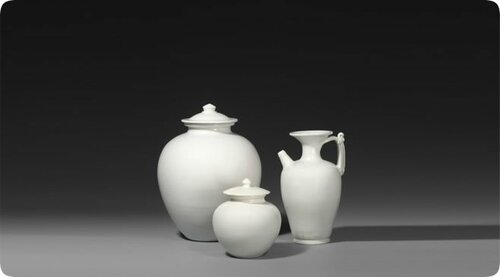

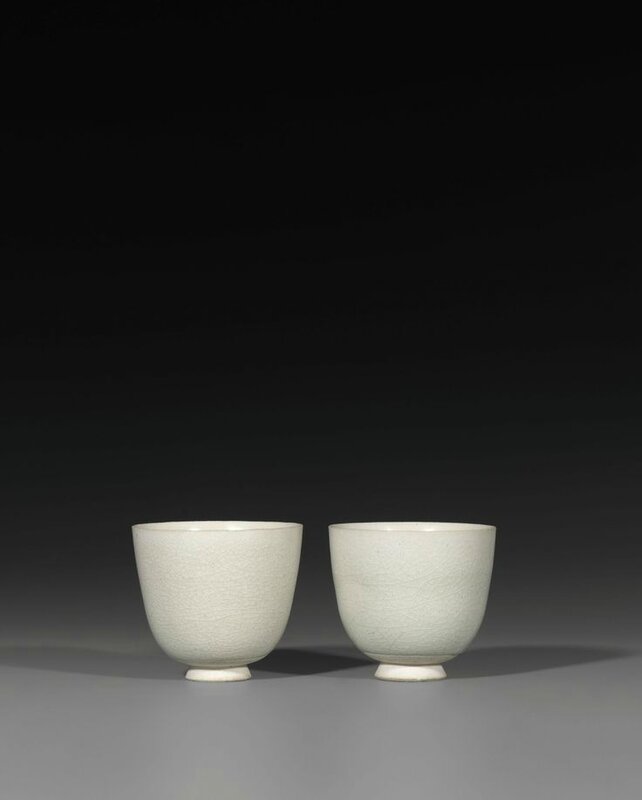
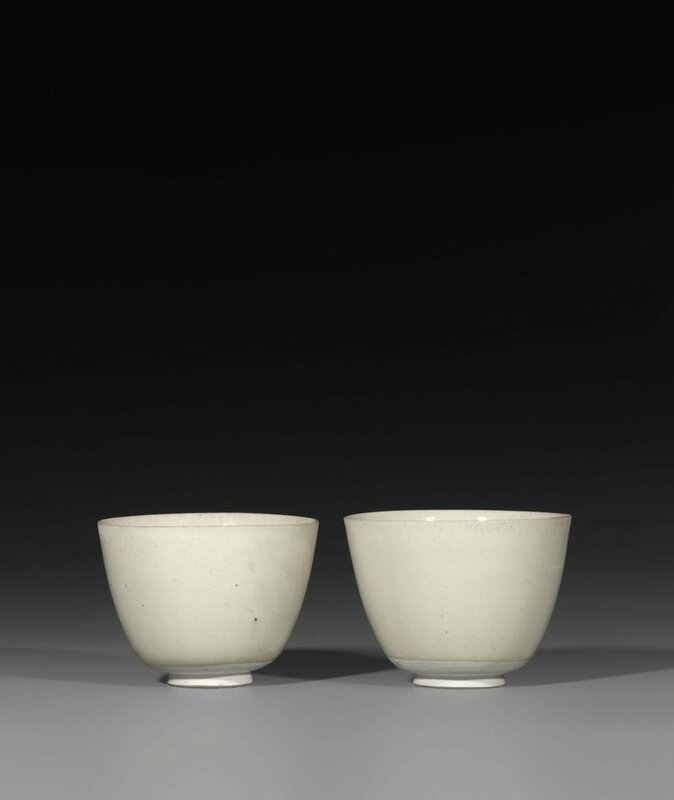
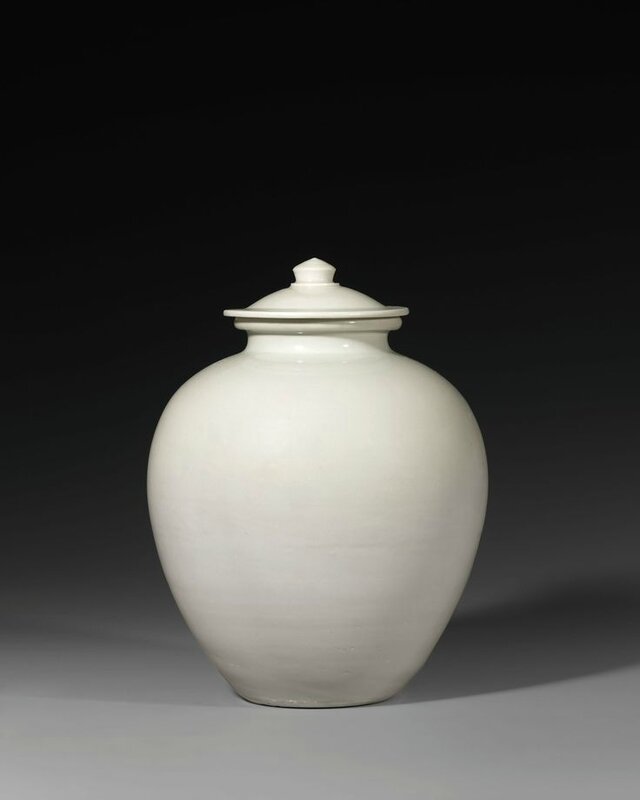

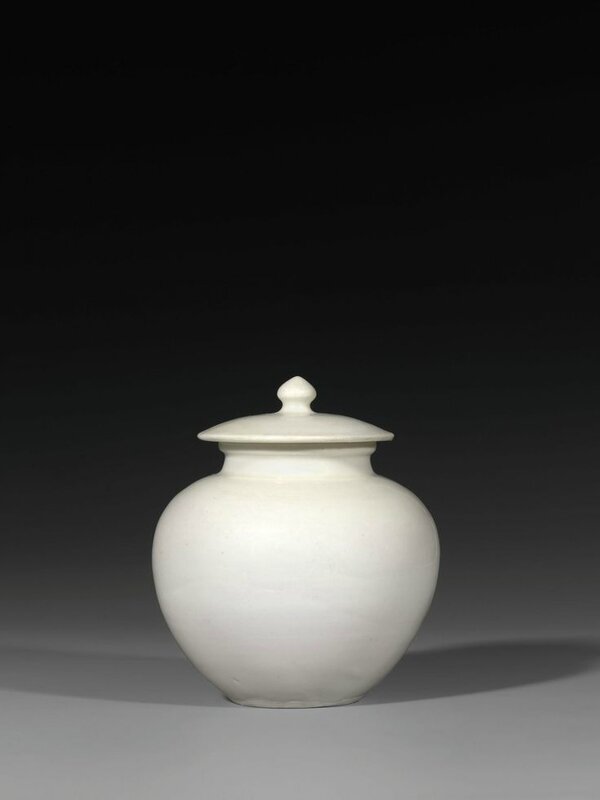
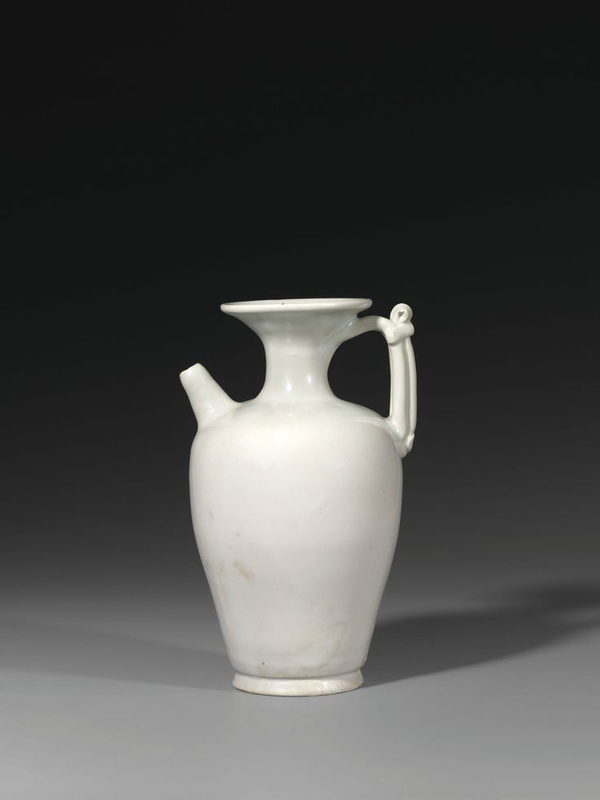

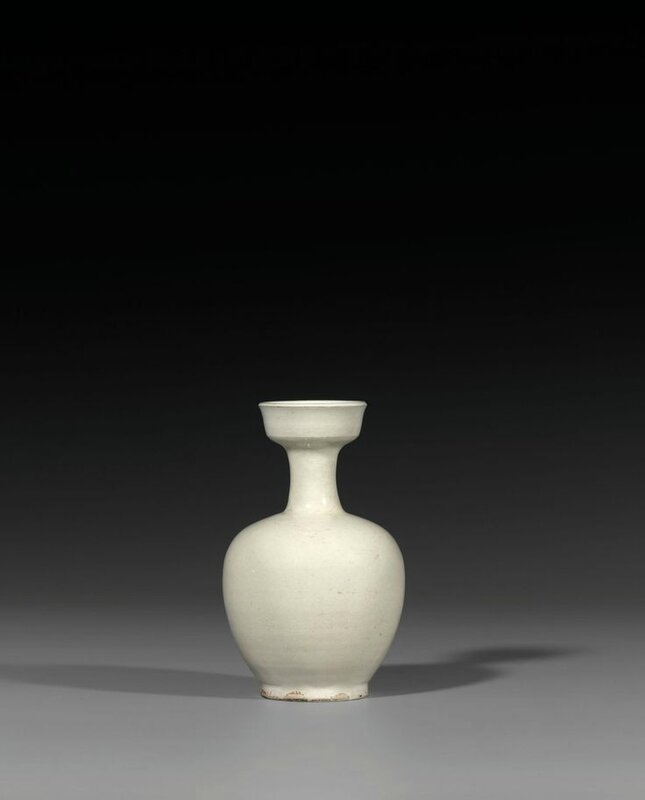
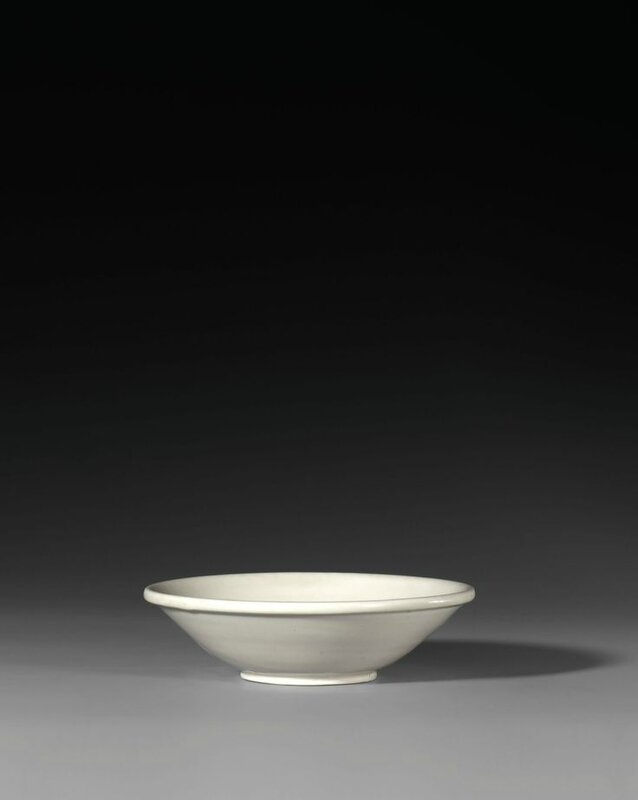

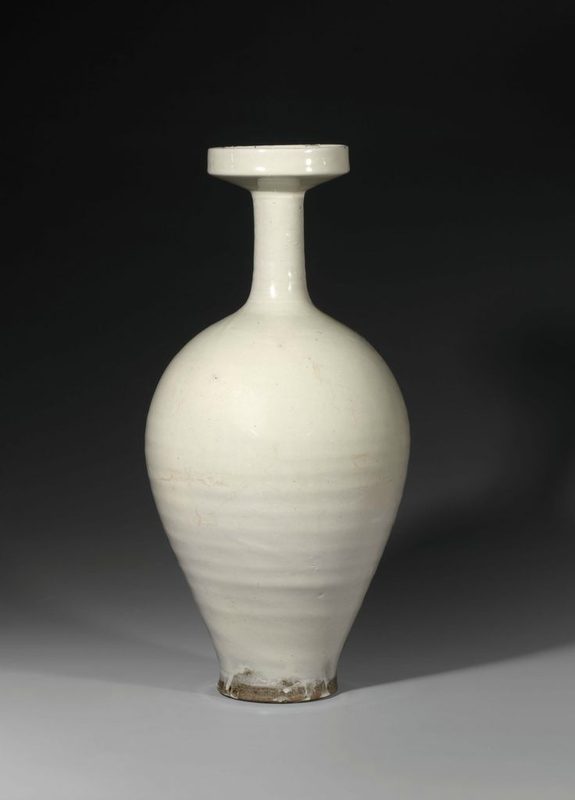
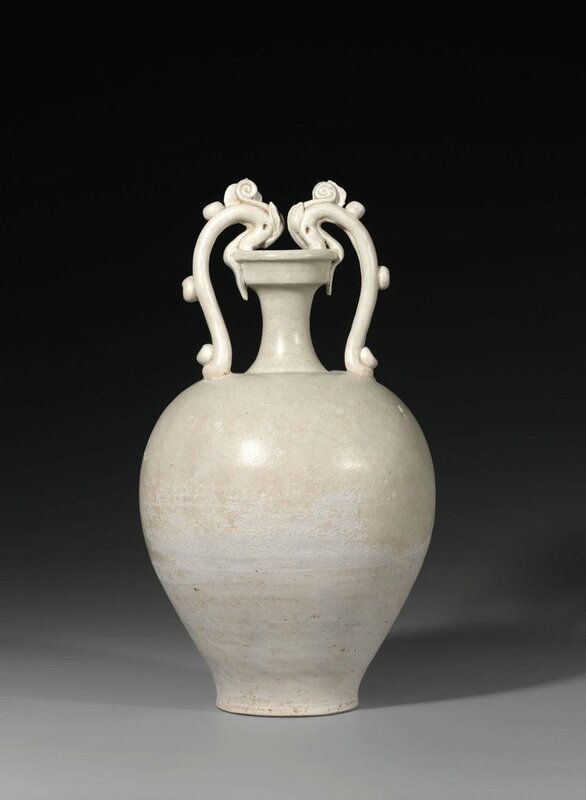


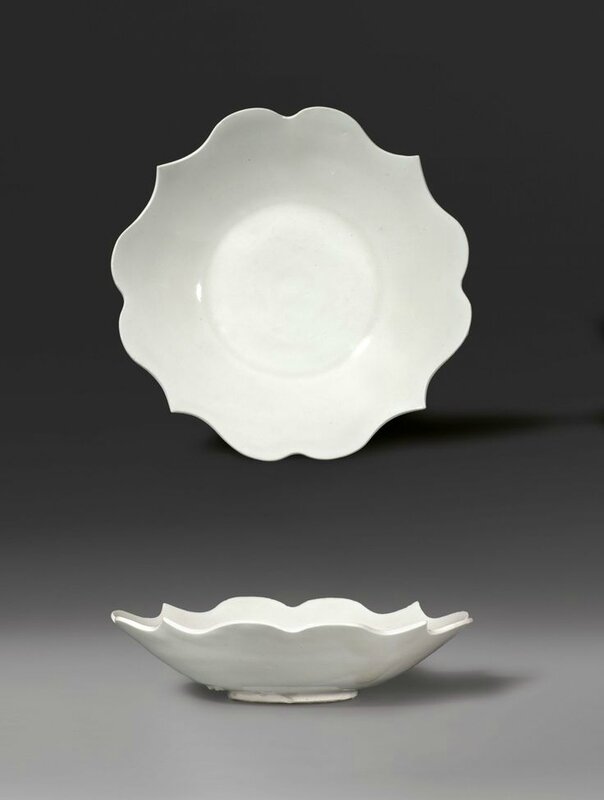
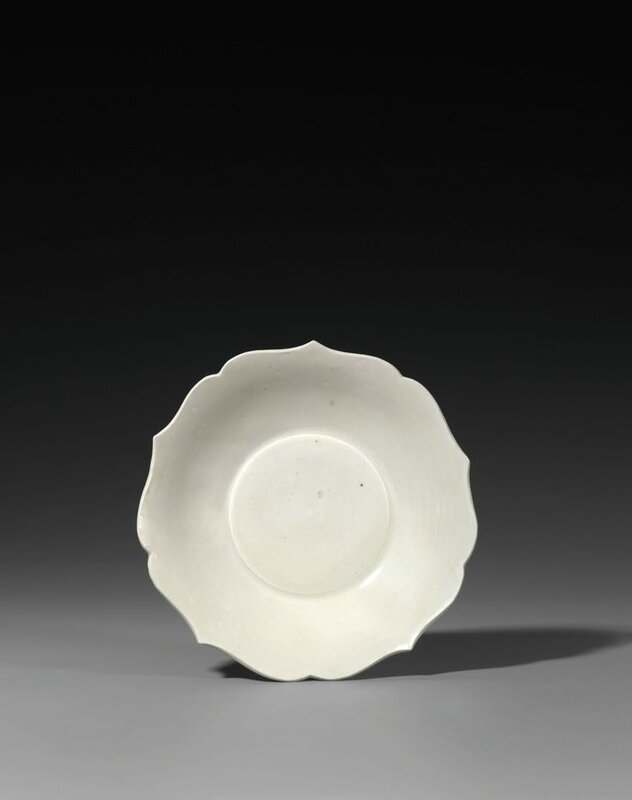
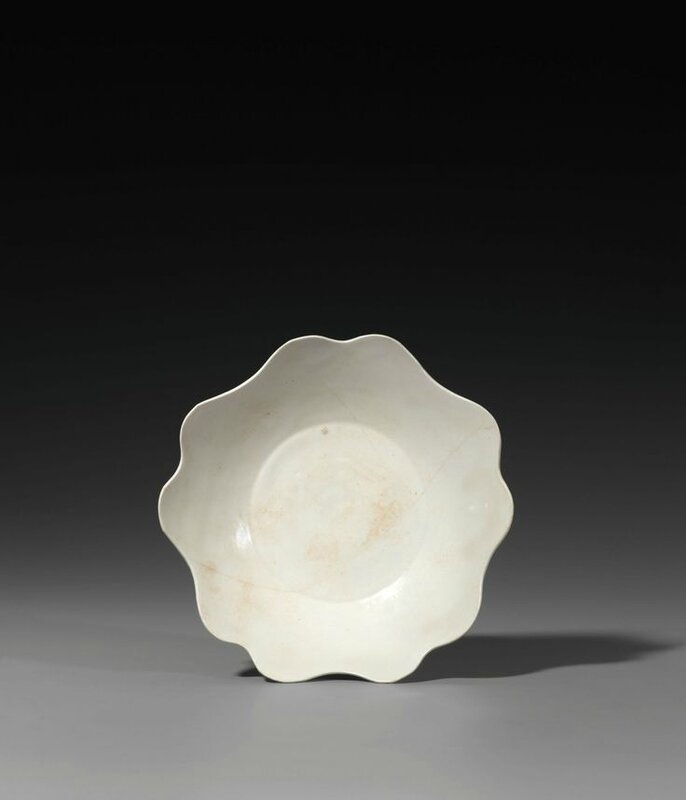
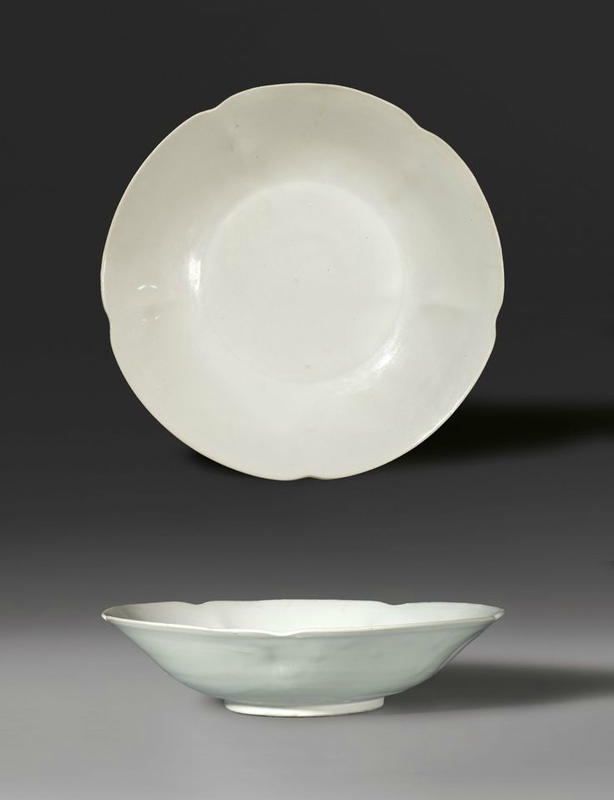
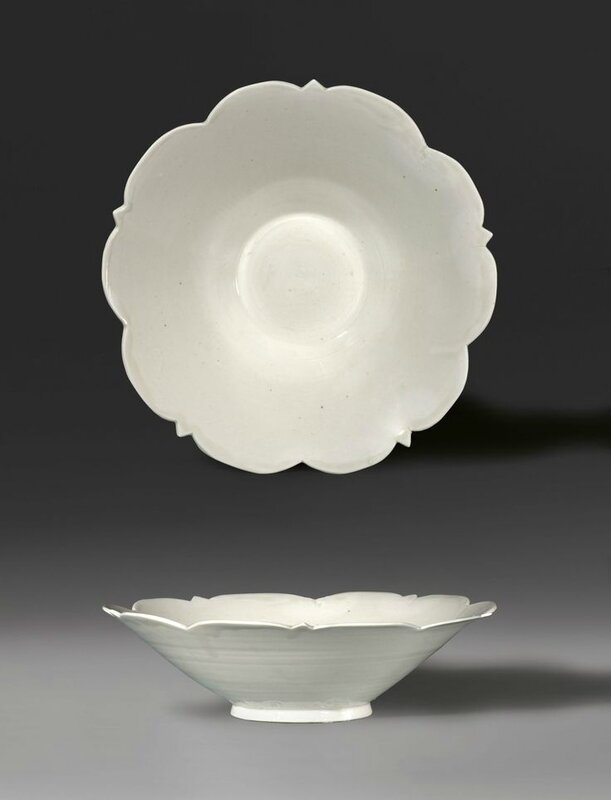
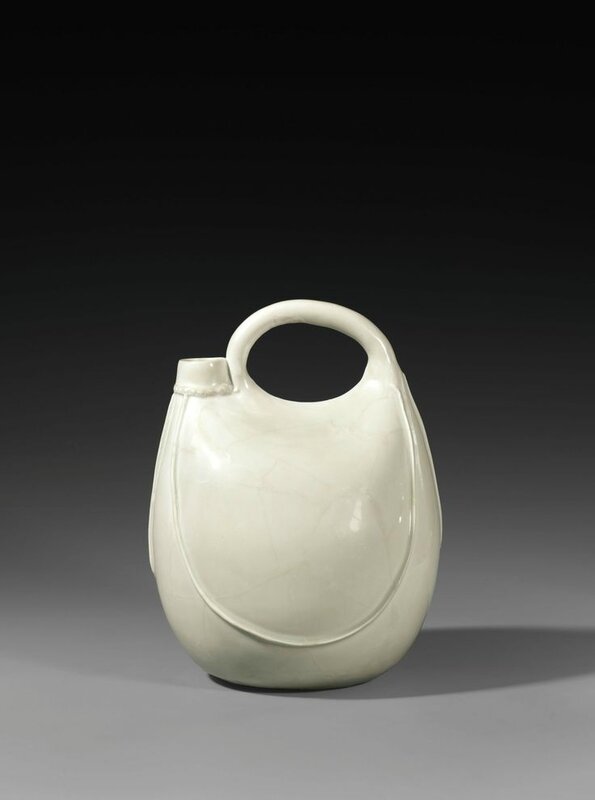
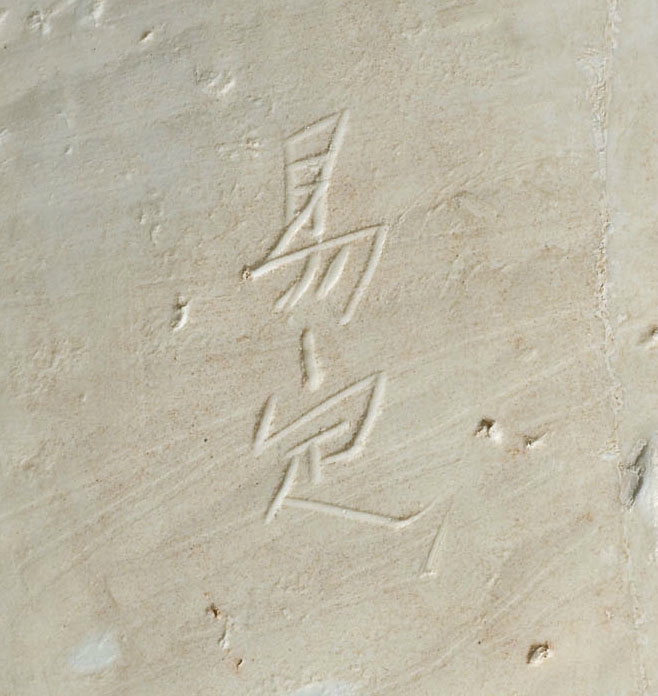
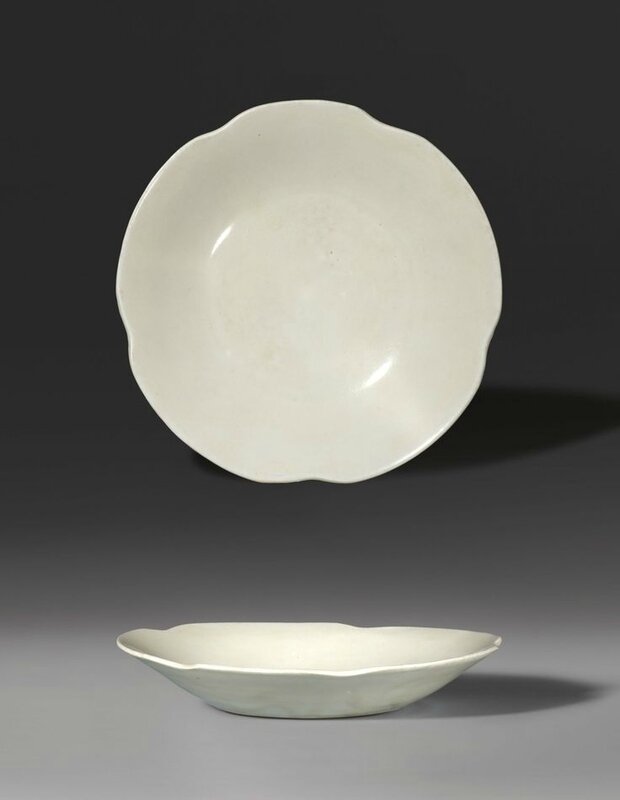


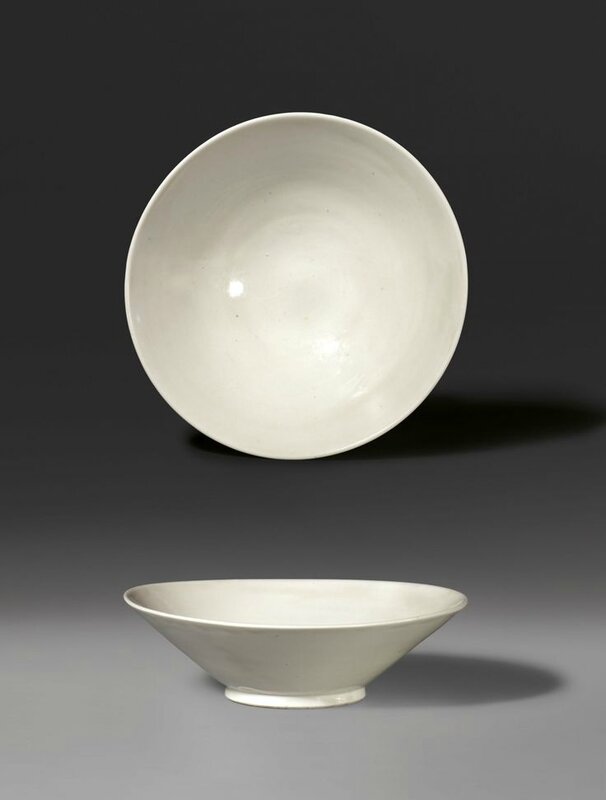
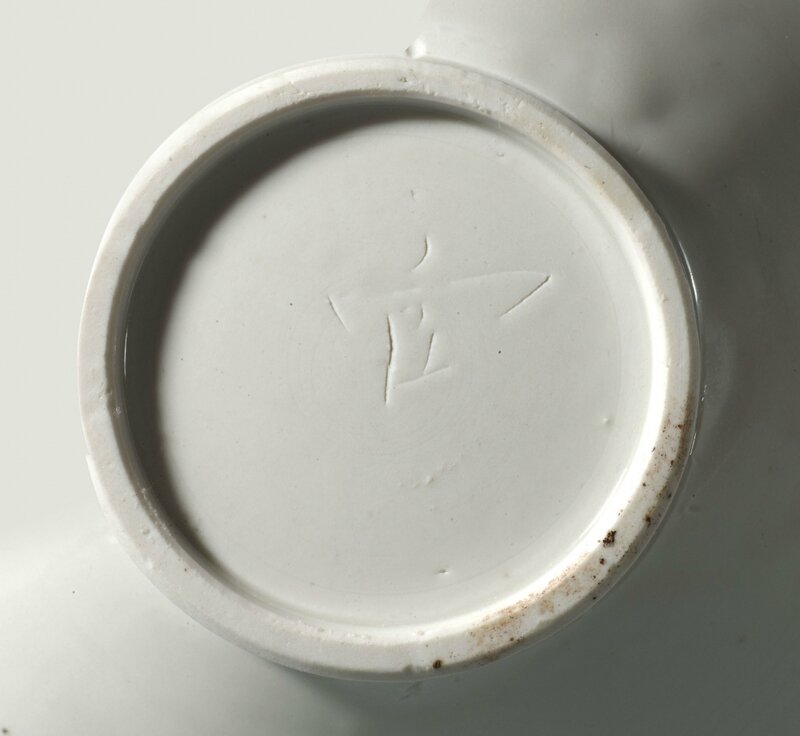
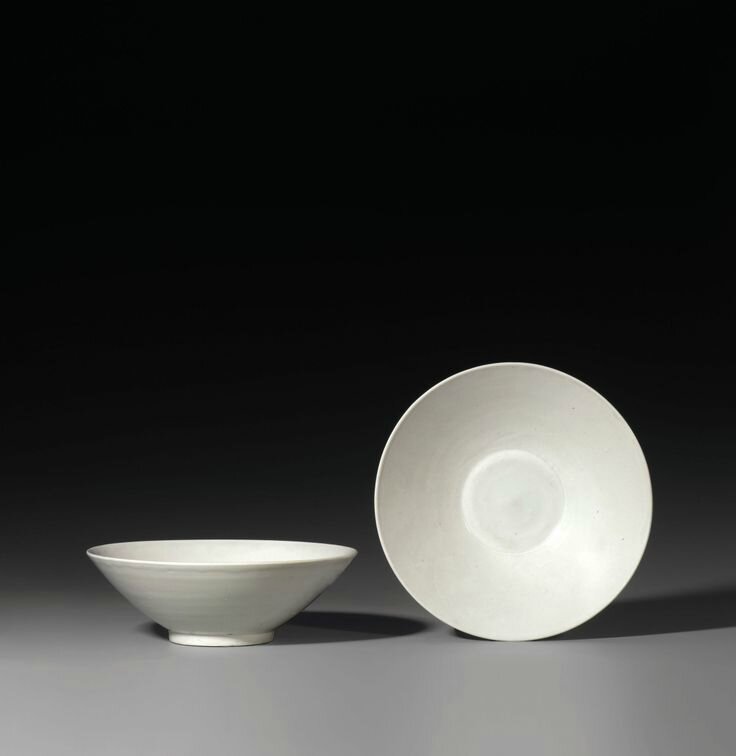


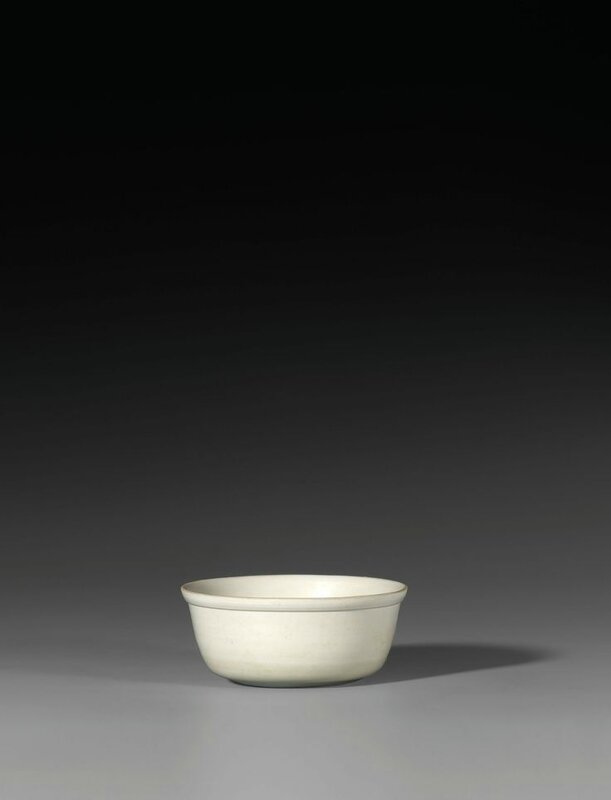


/http%3A%2F%2Fstorage.canalblog.com%2F54%2F03%2F119589%2F126618278_o.jpg)
/http%3A%2F%2Fstorage.canalblog.com%2F23%2F20%2F119589%2F126357156_o.jpg)
/http%3A%2F%2Fstorage.canalblog.com%2F09%2F74%2F119589%2F112768481_o.jpg)
/http%3A%2F%2Fstorage.canalblog.com%2F69%2F60%2F119589%2F112694898_o.jpg)